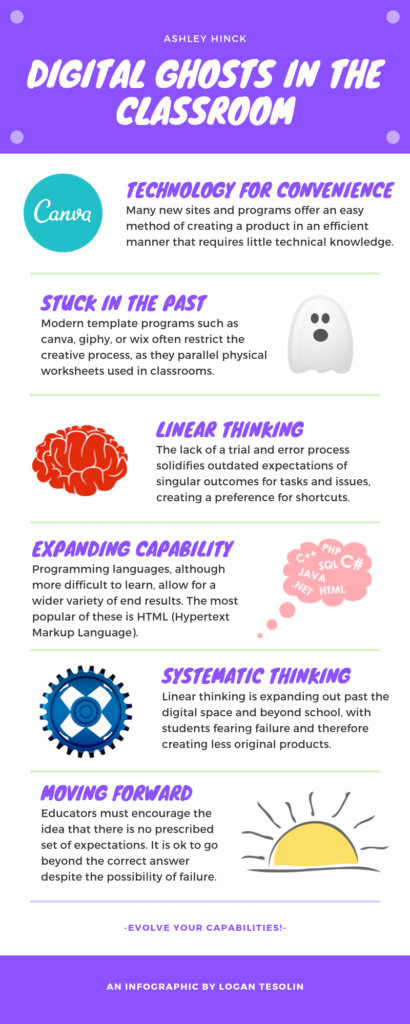Ontario Extend’s Technologist Module is a helpful tool for educators that aspire to integrate technology into the classroom. It works on the premise that one’s students have problems that can be effectively solved using different digital tools or software. This time around, I used a twitter essay to outline what it means to be and think like a technologist:
I will first talk about my experiences with using a twitter thread for the first time. My initial reaction came in response to the limited character count. As an English major, I am accustomed to writing out my thoughts in much larger structures. However, a common practice within my subject is to write for conciseness, so this was not new to me. The formatting played off of my skill set, in that, I am used to the requirement of exact speech to get a point across. Twitter encourages summarizing content into bits of digestible knowledge, which is very user-friendly both for the poster and viewer of the tweet.
Next, I was lucky enough to find that the tweet function is extremely straightforward, making its use functionally simple and less confusing than something like canva or a mind map, which has a variety of different approaches to the same goal. I enjoyed the ease of getting a thought out without having to worry too much about extreme visual components such as user-friendly graphics and appealing aesthetics. The free range of images or gifs to choose from may seem contradictory, but due to the accompanying information in the essay, finding a copyright free visual that related to the topic was no hassle.
As for the module itself, my experience with tech in the classroom has been entirely limited to slideshows, movies, and displaying google docs for essay editing techniques. These uses are by no means revolutionary, and I hadn’t considered what I could do differently with tech to improve my lessons during practicum (I was just worried about not screwing up the basics). However, reflecting back to how my associate used tech, there were a few instances that stood out to me. First, was the use of QR-codes to bring students directly to websites, saving time, rather than typing out links or googling in hopes of finding what the teacher intended. Another notable use was an IEP student accommodation for in-class essay, which utilized a laptop for task completion. Necessity of accommodation aside, I believe all students would benefit from typed essays and tests, as a common problem among students in English seems to be a lack of time to complete evaluations. Incorporating chromebooks or laptops into evaluations with internet restrictions could work toward solving the ever-growing problem of test anxiety. Tech can be used for efficiency, assuming that it isn’t difficult to set up.
Although my experience with tech is extremely limited, I find that the most critical part of the design-thinking process is ideation. By extension, the SECTIONS Model is of critical importance for the selection of pedagogical tools to be used appropriately in the classroom. At the very least, it gets the user to think. One must consider whether the benefits outweigh the hassle of implementation, considering how easily a technology-driven lesson or assignment can spiral into the realm of overcomplexity. Although one could consider it overkill and convoluted, as each subsection of the model links to another set of several questions, the point is to get the educator to consider these factors. The model does not provide answers; it helps you provide them for yourself. It requires you to work for the answer to critically important factors in your decision-making process.
Technologists have the power to revolutionize teaching or convolute it. Every implementation needs purpose and needs to address problems in the classroom. Teaching that doesn’t grow alongside the world’s ever-growing resource of pedagogical tools is teaching that becomes stagnant, uninteresting, and outdated. We should make it our goal as educators to make learning as easy and accessible as possible to our students, so that they can be inspired to do great things. You don’t need to be a technological genius right off of the bat– you just need to experiment and figure it out over time.










